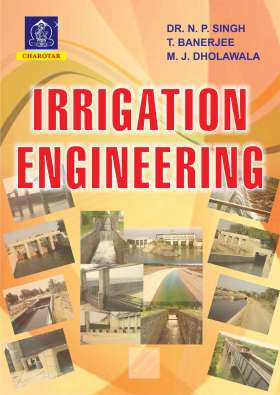This text-book aims at presenting the topics of Irrigation Engineering in a simple manner. Each topic of the book has been arranged in such a way that reader is empowered with in-depth knowledge of the subject. It lays stress on clarity of concepts and enhancement of understanding of design principles of Irrigation Engineering Structures. The book is arranged into 5 modules and 7 chapters
Module 1: Chapter 1 gives Introduction of the subject of Irrigation Engineering. It conceptualizes soil water plant relationship and also highlights history of irrigation development in India Chapter 2 is on Water Requirements of Crops.
Module 2: Chapter 3 covers the topics on the Methods of Irrigation. Chapter 4 discusses Irrigation Channels (Canals) and explains procedures for their design.
Module 3: Chapter 5 is about Diversion Head Works and gives detailed design procedure for the sloping glacis weir with solved examples.
Module 4: Chapter 6 gives Cross Drainage Works including detailed designing of canal transitions
Module 5: Chapter 7 covers the topic of Canal Regulation Works The Appendix I gives University Paper with Answers. In Appendix II Photographs of Cross Regulators and Head Regulators are given. In Appendix III Photographs of Regulation Structures are provided.
At the end of each chapter a summary is provided. The book also contains
147 Self explanatory and neatly drawn drawings
61 Numerical problems from past GTU question papers and other numerical problems in each chapter
39 Useful Tables
89 Questions at the end of all the chapters.
This book is designed to cover the syllabus of subject of Irrigation Engineering (Subject code: 170602) being taught in the seventh semester of bachelor of civil engineering course under Gujarat Technological University (GTU). The book should also prove to be useful to the Engineering students preparing for the Degree Examinations of all the Indian Universities, having similar syllabus as GTU. Understanding the design principles helps in developing the analytical ability of the reader. It also lays the foundation for becoming a design professional in the field of Irrigation Engineering.


